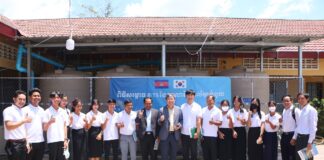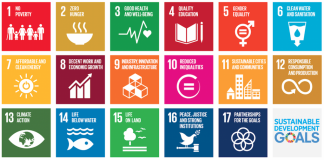Tag: SDGs
New WHO/UNICEF report finds major inequalities in WASH services
A new report from the World Health Organization (WHO) and UNICEF reveals that major gaps still exist in access to water, sanitation, and hygiene...
LeaP – Empowering future water leaders
IWA’s new LeaP Leadership Programme for Young Water Professionals is giving exceptionally talented young professionals the opportunity to gain the skills to drive innovative,...
Rain Schools progress in Cambodia
As Cambodia and Korea position themselves as leaders in rainwater awareness, education and training, Cambodia has launched the Rain School Initiative which is aiming...
The importance of capacity building
Capacity is an essential factor in the delivery of safe, sustainable Inclusive Urban Sanitation (IUS), without which progress can be hampered and vital efficiencies...
Citywide Inclusive Sanitation: Consolidation of sectoral efforts
Abishek S Narayan, a member of IWA’s Inclusive Urban Sanitation Task Force, reflects on the ‘state of the art’ of the CWIS approach, following...
Investing in SDG 6: A vital confluence of natural, human, and...
By Kala Vairavamoorthy
At any given moment, day and night, a quarter of a million people are aloft, jetting at 800 km/h at an altitude...
In developing countries, increased financing for water utilities is the only...
By David Omolo
One of the very first things that struck me when I came to the Netherlands, was how inconsequential drinking water was for...
IWMI brings in new leadership
The International Water Management Institute has appointed two new executives with broad experience in the conservation and use of transboundary rivers.
Claudia W. Sadoff arrived...
Water and sanitation companies must be socially responsible
By Marco Antonio Cevallos*
The Public Water and Sanitation Company of Quito, EPMAPS Agua de Quito, has been providing water and sanitation services to Ecuador’s capital...
Community management of drinking water and sanitation in rural Chile
By Guillermo Saavedra*
In Chile, approximately 1,700 community organisations supply water to 13 percent of the Chilean population in rural areas. They are non-profit organisations...












